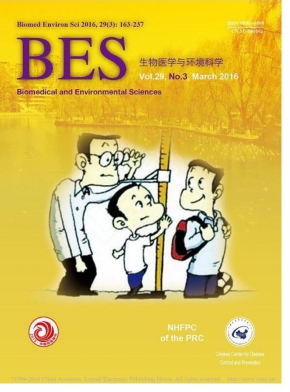Adsorption of Toxic Metals and Control of Mosquitos-borne Disease by Lysinibacillus sphaericus:Dual Benefits for Health and Environment
doi: 10.3967/bes2016.023
-
Key words:
- Lysinibacillus sphaericus /
- Culex quinquefasciatus /
- Entomopathogen /
- Toxic metals /
- Heath
Abstract: Objective Assessment of the bacteriumL. sphaericusas a dual-action candidate for biological control of mosquito-borne diseases and bioremediation of toxic metals. Methods Larvae of the mosquito,C. quinquefasciatus, were first evaluated for metal tolerance and then exposed to 5 ppm cadmium, chromium, arsenic, and lead in assays together with seven strains of L. sphaericus. A probit regression analysis was used to estimate the LC50 of Cd, Cr, As, and Pb toC. quinquefasciatus.An analysis of covariance and multifactorial ANOVA examined the metal biosorption and larvicidal properties of the seven strains of L. sphaericus. Results We found that L. sphaericus adsorbed the toxic metal ions and was toxic against mosquito larvae. The L. sphaericus strain Ⅲ(3)7 resulted in a larvae mortality of over 80% for all the tested metals. This strain also exhibited the capacity to adsorb 76% of arsenic, 32% of lead, 25% of chromium, and 7%of cadmium. Conclusion This study found combined metal adsorption and larval toxicity associated with three strains ofL. sphaericus[Ⅲ(3)7, OT4b.31, and CBAM5]. This suggests that a combination of these strains shows strong dual potential forbiological control of mosquitosin heavy metal-contaminated areas and remediate the heavy metal contamination as well.
| Citation: | Javier Edo.Vargas, Jenny Dussán. Adsorption of Toxic Metals and Control of Mosquitos-borne Disease by Lysinibacillus sphaericus:Dual Benefits for Health and Environment[J]. Biomedical and Environmental Sciences, 2016, 29(3): 187-196. doi: 10.3967/bes2016.023 |







 Quick Links
Quick Links
 DownLoad:
DownLoad: